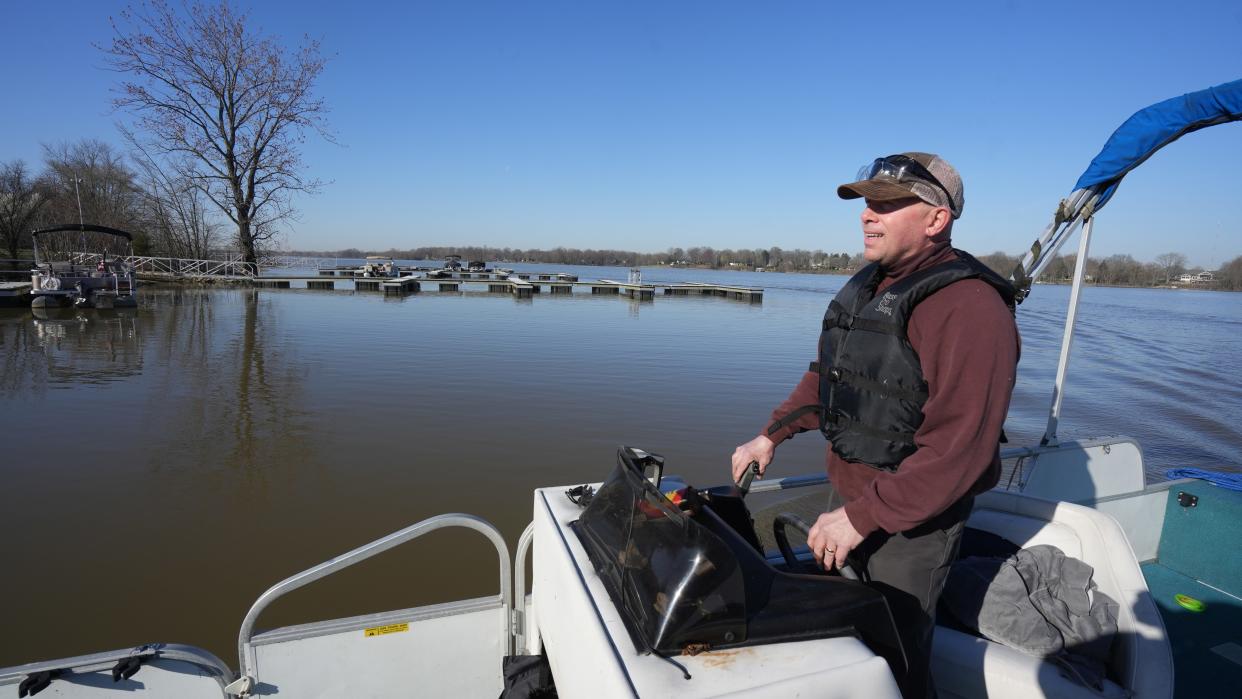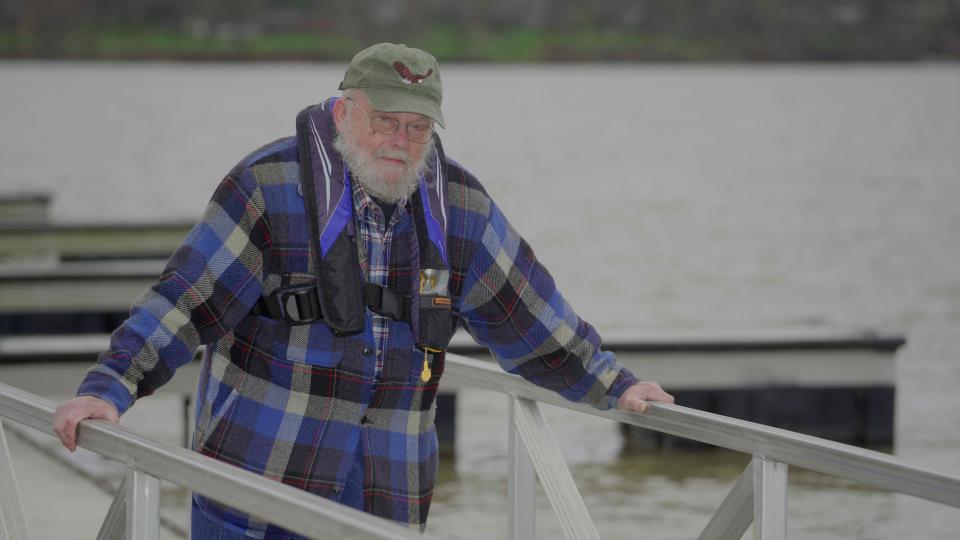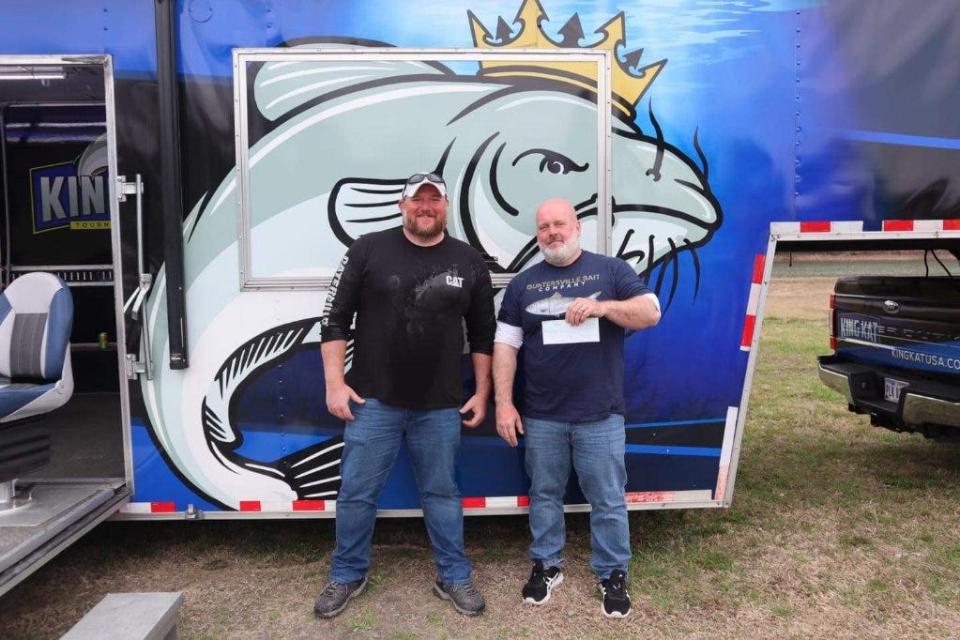Mandatory life vests in Ohio? Lawmaker eyes boat safety rules after Hoover Reservoir tragedy

- Oops!Something went wrong.Please try again later.
The death of Shane Henderson, a 44-year-old father of two and avid fisherman and boater, has stirred some of his friends — and an Ohio lawmaker —to consider boating safety reforms including that personal floatation devices be worn, not just stowed on boats.
Neither Henderson, nor most others in the 13 members of the Hoover Cats catfishing club competing in a March 23 tournament on the Columbus-owned reservoir, were wearing life jackets, despite gale-force gusts that had created whitecaps on waves above frigid water.
"Look at the hardship it has imposed on his family, all of which would have been prevented" said Jim Horan, commodore of the Buckeye Boat Club based at Hoover Reservoir.
A week after Henderson's drowning, Horan was installing more than 100 docks in preparation for pontoon boat season at the reservoir.
"All of us who were installing the docks were wearing PFDs," he said of personal flotation devices. "I told them they had to."

A fully clothed person who falls into 40-degree water without a floatation device will panic due to shock and hypothermia and have little chance of surviving long, Horan said. One of his workers fell in on April 1 and was quickly retrieved by those nearby.
Requiring that personal floatation devices (PFDs) be worn by boaters, under certain conditions, is the law in some states such as New York. But not in Ohio.
"I can't understand why we require seatbelts to be worn in cars, but not PFDs in boats," Horan said.
U.S. Coast Guard statistics from 2021 show that 83% of drowning victims related to boating accidents were not wearing life jackets.
More: Hoover death wake-up call for use of life vests
During Henderson's funeral on April 4, Ohio Rep. Mary Lightbody (D-Westerville) was considering potential laws that might prevent another death.
Lightbody, a long-time teacher and avid boater, had "parents who brought me up with the idea that you always wear life jackets," she said. Modern floatation devices are "more comfortable and higher tech than what I grew up with," she said.
Yet in spite of, or maybe because of, experience "some boaters may think that they don't need that, that it's not macho."
She said she's begun researching current laws and studying improvements.
"I'm certainly willing to bring a bill forward," she said.
Whether tougher boating laws can get through a Republican-controlled Statehouse remains unknown. In 2013, Gov. John Kasich signed into law the "Boater Freedom Act" that limits inspections of boats by watercraft officials.
Lightbody also knows that policing a recreational pastime could be challenging.
"You write a law, you have to enforce the law," she said.
She thinks there would be support, however, especially among law enforcement.
"The police and dive teams hate to have to go into murky water and search for a body," she said.
Hoover supplies Columbus drinking water and the city owns the dam and reservoir. But it is bounded by Blendon and Genoa townships and the city of Westerville to its west. The Ohio Department of Natural Resources oversees recreation and fishing activities, but it posts no warning signs for inclement weather. Neither does the city of Columbus, which does have a watercraft ranger whose main role is water quality.
The patchwork of jurisdictions may leave Hoover boaters more vulnerable, a reality acknowledged by Columbus Department of Public Utilities, which oversees the drinking water supply and watershed management.
"We would welcome any changes that state officials may deem necessary to propose to enhance boating safety," said Laura Young Mohr, utilities spokeswoman.

Joe Hatfield, a close friend of Henderson's, said that he's committed to improving safety.
At least a few fishing tournaments as far away as Alabama were cancelled due to poor weather a week after the Hoover tragedy.
Hatfield supports new rules and even laws that could prevent needless drownings.
But, he said, "There's no enforcement. The state runs so thin. I do think it's going to be up to ourselves to make sure safety issues are followed."
Meanwhile, Hatfield is planning to speak with fishing and school groups about boating safety. And tournament decisions will be "made by committee," instead of one person. Henderson was the Hoover Cats tournament organizer and encouraged the March 23 event over objections from some of his members.
Avid boaters and anglers must prioritize safety and be role models for the less-experienced and casual boaters, Hatfield said.
"Absolutely. We've had boats go down in bad conditions. I think a lot of guys need to realize that we're talking about fishing. It's not worth our lives."
The Old Dutchman Bait & Tackle has operated along Sunbury Road for 70 years.
Owner Judy Holtzapfel sells distress flags, whistles and air horns to call for help. She also stocks life jackets, but not the higher-end, comfort-focused styles that can be self-inflating.
She said there are no warning signs, windsocks, flags or other methods to instruct boaters about unsafe conditions at Hoover. Safeguards are limited to the individual.
"I think it's your own common sense," she said.
dnarciso@dispatch.com
@DeanNarciso
This article originally appeared on The Columbus Dispatch: Hoover Reservoir tragedy brings call for Ohio boater safety reforms

